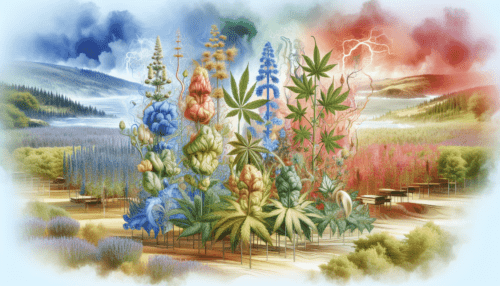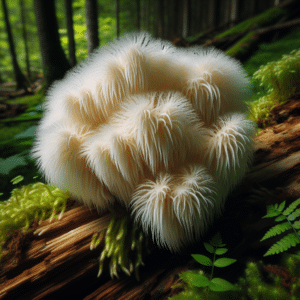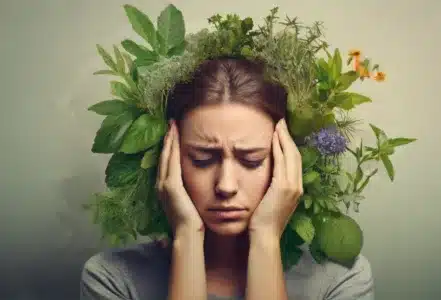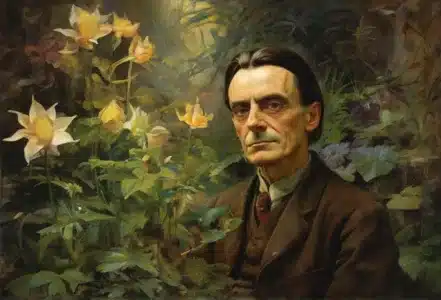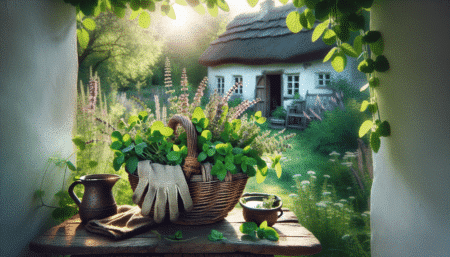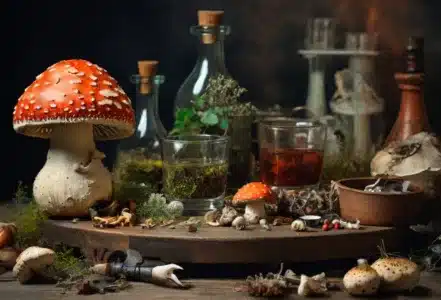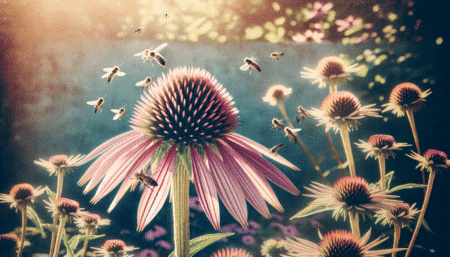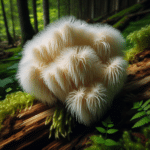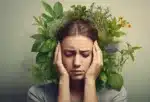- Introduction
- The role of mind-altering plants in European cultural history
- Scientific classification and modes of action
- Prominent examples and their properties
- Legal situation and social perception
- Conclusions and outlook
1. introduction
Psychoactive plants, mushrooms and even animals contain substances that can alter human consciousness when ingested or applied topically [1]. For centuries, different cultures have used them for medicinal, religious or recreational purposes [1]. In Europe in particular, psychoactive plants have a long history, from relieving pain and increasing energy to suppressing hunger, and play an important role in traditions and rituals [3]. The best-known psychoactive plants in Europe include the opium poppy (Papaver somniferum L.) and hemp (Cannabis sativa L.), both of which have marked effects on the central nervous system and can alter states of consciousness [3].
This article focuses on the mind-altering plants of Europe, examining their role in cultural history, their scientific classification and modes of action, as well as their legal situation and social perception [1][3]. Despite the significant impact that the use of psychoactive substances has had on human society in recent decades, their traditional and historical use should not be overlooked [3].
2. the role of mind-altering plants in European cultural history
- Medical and Ritual use:
- Psychoactive plants were used for various purposes in Europe, including medicinal, religious and magical rituals [3].
- In particular, hemp (Cannabis sativa) and the opium poppy (Papaver somniferum L.) are among the oldest and most widespread psychoactive plants in Asia and Europe, which have been used for their mind-altering effects as well as for their healing properties, pain relief and appetite suppression [3][5].
- Psychoactive plants were used in various forms such as medicines, ointments, incense, potions and salves and were used in medieval times by WitchesThe scent is used by sorcerers and magicians to prepare various scents, ointments, incense, potions and broths [3].
- Cultural influence and historical significance:
- The psychoactive properties of hemp may have led to the development of new spiritual beliefs and interpretations of reality, possibly influencing the invention and interpretation of invisible spirits and deities [5].
- In Europe, hemp was a key crop for the production of ropes, sails, clothing, paper and oil products until the 18th century [5]. The industrial revolution and the invention of synthetic fibers led to a decline in hemp cultivation, but due to environmental concerns and the potential for new applications, there has been a resurgence of interest in hemp cultivation in recent years [5].
- The historical use of psychoactive plants in Europe should not be overshadowed by their recreational use, as they are deeply rooted in cultural history and tradition [3].
- Examples of specific plants and their use:
- Black henbane (Hyoscyamus niger)Was popular with witches and was used in various potions and ointments [3].
- Mandrake (Mandragora officinarum): Known for its deadly scream, was used in medieval magic [3].
- Hemp (Cannabis sativa): Has been used for its narcotic effects and is one of the oldest and most widely used psychoactive plants in Asia and Europe [3].
- The most important psychoactive plants and mushrooms include belladonna, black henbane, mandrake, hemp, opium poppy, datura and tobacco [4].
3. scientific classification and modes of action
The traditional use of these plants has had a significant impact on medicine, with many of them being used to cure, relieve or suppress pain for millions of people [3]. The "Encyclopedia of Psychoactive Plants" by Christian Rätsch is a comprehensive resource on the subject and provides detailed information on botany, cultivation methods, preparation, dosage, history, ritual and medicinal uses, active ingredients, effects, market forms and regulations [7]. Psychotropic substances have been both traditionally and therapeutically important for centuries [8].
- Active ingredients and their effects:
- Cannabis sativaContains delta-9-THC and cannabidiol (CBD), which have different effects on the human body. While delta-9-THC can have a psychoactive effect, CBD has antipsychotic, analgesic and anti-inflammatory properties [8].
- Erythroxylum coca and Erythroxylum novogranatense: Sources of cocaine, a powerful stimulant [8].
- Papaver somniferumContains various alkaloids, including morphine, codeine and thebaine, which have analgesic, antitussive and narcotic properties [8].
- Examples of specific psychoactive plants:
- Aztec sage (Salvia divinorum)Contains high concentrations of salvinorin A and B, consumed by smoking dried leaves or chewing fresh leaves [9].
- Betel palm (Areca catechu)Contains alkaloids, with arecoline being the most common, consumed by chewing the nuts [9].
- Angel's trumpet (Brugmansia)Contains high concentrations of hyoscyamine and scopolamine, consumed by smoking, eating or drinking as a hot drink [9].
- Magic mushrooms / Psychoactive mushroomsContains psilocybin and psilocin, about 180 species with hallucinogenic properties [9].
- Peyote cactus (Lophophora williamsii)Contains mescaline (peyotl), consumed by eating or cooking the heads/tips [9].
- Belladonna (Atropa belladonna): Contains atropine, used in traditional medicine and can cause dilated pupils and altered sensory perception [9].
Despite the potential for addiction and side effects, the variety of medicinal uses of plants should not be overlooked [8]. The "Encyclopedia of Psychoactive Plants" by Christian Rätsch offers a comprehensive overview of various psychoactive plants, their botany, ethnopharmacology and applications [10]. The book covers psychoactive plants, their uses, psychoactive plants and shamanic consciousness, the fear of psychoactive plants, research into psychoactive plants, psychoactive plants as culture-forming factors and a comprehensive section on various psychoactive plants [10]. It also covers psychoactive mushrooms, their archaeology, cultivation and classification [10].
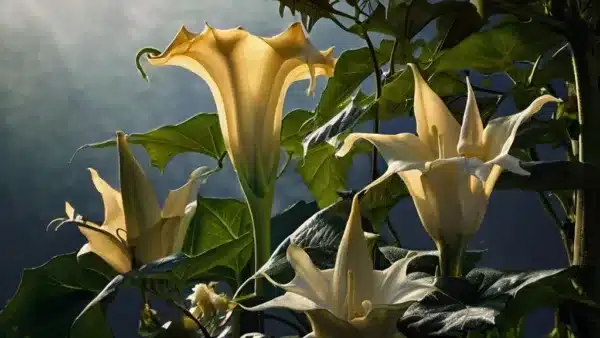
4. prominent examples and their properties
- Psychoactive mushroomsThe "Encyclopedia of Psychoactive Plants" also covers psychoactive fungi, products and plant substances that play an important role in traditional medicine and culture [2].
- Examples of psychoactive plants in Europe:
- Acorus calamus (calamus)Contains asarone, has a mild stimulating effect and is used in traditional medicine [11].
- Artemisia absinthium (wormwood herb)Used in the production of absinthe, contains thujone [11].
- Atropa belladonna (black belladonna)Contains atropine and scopolamine, is used in traditional medicine and is known for hallucinations and a feeling of lightness or flying [11][3].
- Papaver somniferum (opium poppy)Contains opium and is used in modern medicine for its analgesic and narcotic effects [3].
- Datura stramonium (Datura)Known for hallucinations, seizures, coma and even death [3].
- Regulation and security:
- Some of these plants are regulated under the 1961 Single Convention on Narcotic Drugs and the 1971 Convention on Psychotropic Substances, which restricts their availability and use [11].
- These plants contain psychotropic substances that can lead to intoxication, psychological and physical dependence and other behavioral disorders [11].
5 Legal situation and social perception
- Genetically modified organisms and plant breeding in Europe:
- The European Union has approved a relaxation of the regulations for genetically modified organisms, in particular certain genome-edited plants [13].
- The use of CRISPR-Cas to edit the genome of crops is growing, but in Europe these plants are classified as genetically modified organisms, leading to criticism from both academia and industry [13].
- Legal situation of cannabis in various European countries:
- Germany: Medical cannabis is legal (subject to prescription) and for the Recreational use legalized [14].
- AustriaCannabis is illegal, but possession of small amounts is no longer prosecuted [15].
- SwitzerlandPossession of small amounts of cannabis is decriminalized, and the sale of cannabis with a THC content of less than 1% is legal [15].
- LuxembourgPossession of up to 3 grams of cannabis has been decriminalized since June 2023, and sale is to be legalized in a second phase of legislation [15].
- Albania: The cultivation and use of medicinal cannabis has been legal since July 2023 [15].
- BelgiumPossession of up to 3 grams of cannabis or a plant is not a criminal offense, but is punishable by a fine [15].
- Greece: The cultivation and sale of medicinal cannabis has been legal since May 2021 [15].
- Ireland: A five-year pilot program to provide access to medical cannabis has been in place since June 2019 [15].
- Italy: Growing cannabis for personal use in private homes has been legal since December 2019 [15].
- Croatia: The cultivation and sale of medicinal cannabis has been legal since 2015 [15].
- Lithuania: Cannabis-based medicines have been legal for prescription since May 2019 [15].
- Malta: The cultivation and sale of medicinal cannabis has been legal since March 2018, and the possession of up to 7 grams of cannabis and the cultivation of up to four plants for personal use has been legal since December 2021 [15].
- Netherlands: The sale of cannabis in "coffee shops" is legal, but the cultivation and sale in large quantities is illegal [15].
- North Macedonia: The cultivation and sale of medicinal cannabis has been legal since 2016 [15].
- Poland: The cultivation and sale of medicinal cannabis has been legal since November 2017, but it only became available in pharmacies in January 2019 [15].
- PortugalPossession of small amounts of cannabis for personal use has been decriminalized since 2000, and medicinal cannabis has been legal since 2018 [15].
- RussiaPossession of small amounts of cannabis is punishable by a fine or up to 15 days in prison, while growing and selling larger amounts is illegal and carries harsher penalties [15].
- Spain: The cultivation and consumption of cannabis in "cannabis social clubs" is tolerated [15].
- Czech RepublicPossession of up to 10 grams of cannabis and cultivation of up to five plants for personal use is not a criminal offense, but is punishable by a fine, and medicinal cannabis has been legal since 2013 [15].
- Ukraine: Medical cannabis has been legal since December 2023 [15].
- United Kingdom: Medical cannabis has been legal for prescription since November 2018 [15].
- Cyprus: Medical cannabis has been legal since February 2019 [15].
6 Conclusions and outlook
This journey of discovery through the mind-altering plants of Europe highlights the profound role these organisms have played in medicinal, cultural and social contexts over the centuries. Their diverse applications range from pain management and medical treatment to ritual and spiritual practices, highlighting their importance in European cultural history. The scientific classification and study of these plants has also broadened our understanding of their modes of action and shows how traditional knowledge and modern research can flow together.
In addition, the consideration of the legal situation and social perception underlines the need to continue and deepen discussions on psychoactive plants within Europe. While some countries are taking progressive steps towards more liberal handling and use, others are still at the beginning of this journey. This underpins the importance of continued research and dialog to fully understand the potential of these plants and to use them responsibly. The fascination with these plants and their ability to enhance the human experience is likely to remain a central theme in science, medicine and society for a long time to come.
Further questions and answers on mind-altering plants
Which plant species are considered psychoactive?
Psychoactive plants contain substances that can influence the psyche. These plants include those that contain caffeine (such as tea, cocoa, coffee, guarana, mate), but also opium poppy, hemp, the coca bush, cath, nicotine, LSD, datura and peyote.
Are there plants that have an anesthetic effect?
Yes, black henbane is a plant that has an anaesthetic effect. A homeopathic mother tincture is made from its flowering form. All parts of the plant contain tropane alkaloids, which are highly effective. They have an inhibitory effect on parts of the involuntary nervous system and relax the smooth muscles. Even the strongly aromatic smell of henbane can have an anaesthetic effect.
Further links and book recommendations
- https://de.wikipedia.org/wiki/Liste_von_Pflanzen_mit_psychotropen_Wirkstoffen
- https://www.secret-nature.ch/85-psychoaktive-pflanzen
- Dr. Christian Rätsch - Encyclopedia of psychoactive plants
- https://www.britannica.com/list/9-mind-altering-plants
YouTube
Note: The information in this article is for informational purposes only and is not intended to replace the advice of a physician or other healthcare professional. Always consult a doctor before using any new herbs or supplements. Furthermore, you should always check whether the cultivation/possession/use/processing of certain plants is permitted in your country. As we only offer ornamental plants in our store, we are only allowed to offer Provide information and advice on the correct care of plants!
References
[1] – https://download.e-bookshelf.de/download/0003/0685/52/L-G-0003068552-0031403112.pdf
[2] – https://www.deutsche-apotheker-zeitung.de/daz-az/1998/daz-24-1998/uid-3634
[3] – https://www.europeana.eu/de/exhibitions/magical-mystical-and-medicinal/psychoactive-plants-introduction
[4] – https://www.europeana.eu/de/exhibitions/magical-mystical-and-medicinal
[5] – https://www.mwv-berlin.de/buecher-bestellen-2016/images/product_images/leseproben_images/9783954664245_Leseprobe.pdf
[6] – https://services.phaidra.univie.ac.at/api/object/o:1275982/get
[7] – https://at-verlag.ch/buch/978-3-03800-995-5/christian-raetsch-enzyklopaedie-der-psychoaktiven-pflanzen.html
[8] – https://unipub.uni-graz.at/obvugrhs/content/titleinfo/2751396/full.pdf
[9] – https://gorilla.green/halluzinogene-aus-der-pflanzenwelt/
[10] – https://at-verlag.ch/media/book_lookinside/1054/lookinside.pdf
[11] – https://de.wikipedia.org/wiki/Liste_von_Pflanzen_mit_psychotropen_Wirkstoffen
[12] – https://www.emcdda.europa.eu/system/files/publications/8585/20181816_TDAT18001DEN_PDF.pdf
[13] – http://biooekonomie.de/themen/zukunft-pflanzenzuechtung
[14] – https://www.emcdda.europa.eu/system/files/publications/14644/2022.2419_DE_02_wm.pdf
[15] – https://de.wikipedia.org/wiki/Rechtliche_Regelungen_zu_Cannabis_nach_L%C3%A4ndern
[16] – https://publikationen.bibliothek.kit.edu/1000132399/121043400

